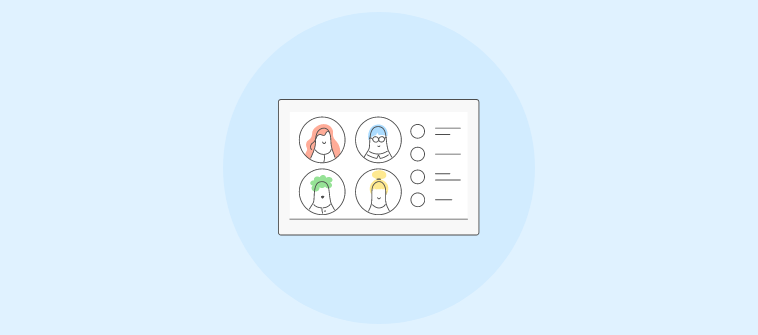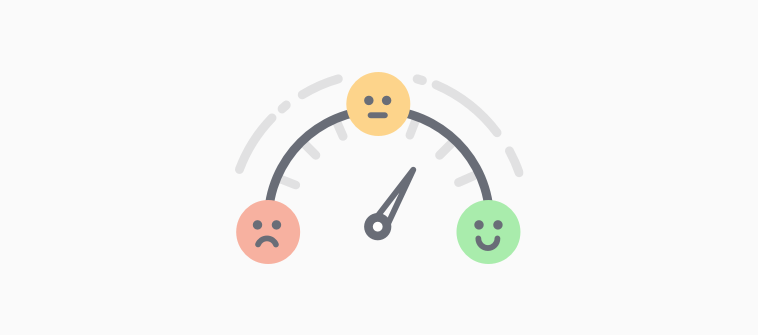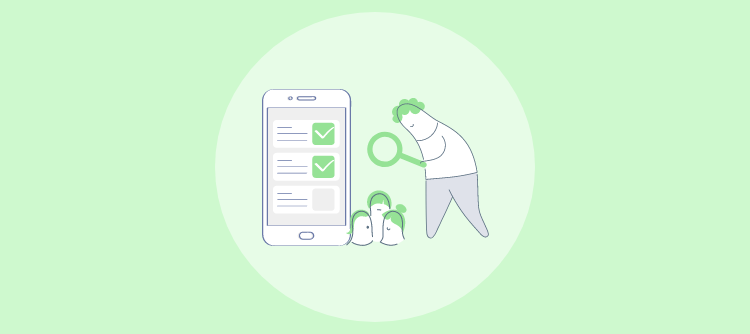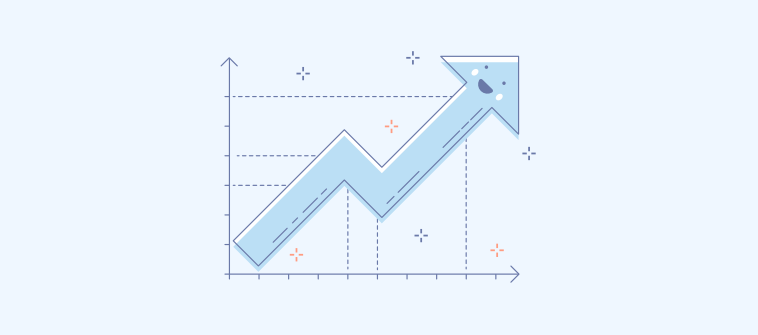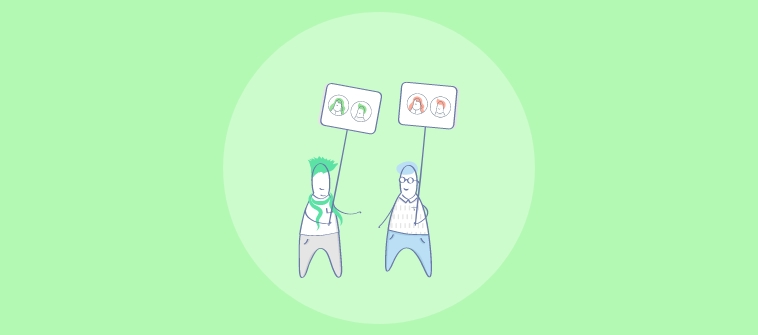
The most important adage and the only adage is, the customer comes first, whatever the business, the customer comes first.”-Kerry Stokes.
The importance of personalized customer experiences cannot be overstated enough. However, customer needs and preferences vary vastly. This makes it challenging to keep up with the demands and offer relevant services.
Enter- customer segmentation!
Segmenting your customer base can yield a positive impact on your business’s bottom line and retention levels. Each group receives more appropriate services when your clientele is well-segmented, which leads to an improved share of wallet and more repeat business.
What Is Customer Segmentation
Customer segmentation involves dividing the customer base into distinct groups based on shared characteristics. These attributes could include the industry, business needs, location, preferences, previous purchases, etc.
Organizing customers into segments based on common traits enables you to deliver more relevant and useful solutions. You can discover each customer segment’s behavior, pain points, and needs and, consequently, provide more satisfactory service.
Customer segmentation is an integral part of any business’s growth strategy. It can impact your marketing performance, product-related decisions, and customer relationships.
When to Use Customer Segmentation
The need for customer segmentation can arise at various stages, including-
1. Marketing
Marketers can use segmentation to tailor the marketing content and increase ROI. By understanding the different segments of customers, you can tailor your marketing strategies and messaging to appeal to each segment’s unique needs and preferences. This can help create more effective marketing campaigns, increase customer engagement and loyalty, and drive more sales.
A personalized client model for marketing allows you to identify and target specific user segments with messages and offers that are most likely to resonate with them.
2. Relationship-Building
80% of customers are more likely to make a purchase when they are offered a personalized experience.
This makes a strong case for segmentation. Demarcating customers into distinct subsets allows you to provide more value to individual clients and keep them satisfied.
Division of customers into smaller groups makes catering to their unique needs easier. The process involves delivering more relevant information that would lead prospects to the purchase decision and keep customers returning.
3. Product Development & Optimization
Segmentation analytics can also provide valuable insights into product development by identifying which products or features are most popular among customer segments. This information can be used to develop new products or improve existing ones to meet customer needs and preferences better.
By dividing a larger customer base into smaller, more homogenous segments, you can develop products that are more effective in reaching and engaging with the target audience.
4. Retention
Identifying and addressing the specific needs of different customer segments improves customer satisfaction and increases customer loyalty, resulting in higher retention rates.
Segmented groups of customers can be targeted with personalized messages and offers. By prioritizing customer segments that have a high likelihood of becoming repeat customers, you can increase customer lifetime value and grow your profits.
Types of Customer Segmentation

Customers differ in several ways. This means that there are several attributes that you can use to segment the customers. The most commonly used customer segmentation types are- geographic, demographic, psychographic, and behavioral.
Segmenting your customer base can yield a positive impact on your business’s bottom line and retention levels. Each group receives more appropriate services when your clientele is well-segmented, which leads to an improved share of wallet and more repeat business.
This guide answers all the important questions about customer segmentation- what it is, its types and examples, the steps you need to follow, and the tools you need for effectively segmenting your customers. Let’s dive right into these!
1. Geographic
Geographic customer segmentation is a type of segmentation based on customers’ geographic location or region. This can include countries, states, cities, neighborhoods, or even specific postal codes. By analyzing the characteristics, needs, and behaviors of customers in different geographic regions, you can tailor your strategies to better meet the needs of each specific location.
2. Demographic
Demographic customer segmentation is based on characteristics such as age, gender, income, marital status, education, occupation, and family size. By analyzing these demographic factors, you can understand the needs of different customer groups and create targeted campaigns that resonate with their interests and values.
3. Behavioral
Behavioral customer segmentation is based on customer actions and behaviors, such as purchase history, brand loyalty, and product usage patterns. Analyzing these behavioral patterns will help you discover what motivates customers and tailor your strategies to meet their needs, preferences, and buying habits.
4. Psychographic
The psychographic customer segmentation strategy focuses on customers’ values, personality traits, lifestyle choices, and interests. This approach is particularly useful for businesses selling products or services closely tied to customers’ personal identities or lifestyles. Use this type of segmentation to create strategies that resonate with the beliefs and aspirations of your customers.
Customer Segmentation Examples
Here are some examples of businesses that got customer segmentation exactly right:
1. Metlife

Metlife uses a combination of factors such as demographic and attitudes to segment its customers into five categories- young achievers, concerned moms, financially mature, ho-hum, and solo content.
2. H&M

H&M uses demographic segmentation to share personalized offers. The business uses the date of birth to categorize its customers and send special discounts to encourage more purchases.
3. Adidas

Adidas uses a variety of segmentation techniques. One of the most prominent of these is segmenting and targeting customers according to their gender.
4. MasterCard

MasterCard uses firmographic segmentation to target companies based on their size. The company also uses factors like age, education level, income level, and occupation for segmentation.
5 Benefits of Customer Segmentation
Having listed the various customer segmentation strategies, we come to the question-
Why does it matter?
Customer segmentation presents a hoard of advantages. It helps you gain a deeper understanding of the customers, allows you to discover the most profitable client segments, and facilitates better business decisions.
Here are some of the most significant benefits of customer segmentation for businesses:
1. Better Personalization
A study by Mailchimp found that segmented email campaigns get 100.95% more clicks than non-segmented campaigns. This is a result of enhanced personalization.
Segmentation helps you deliver more personalized and targeted customer experiences. With better insights into what your customers need and like, you can customize your messages extensively and get positive outcomes. Segmentation also allows you to deliver more relevant offers, recommendations, and services, which results in customer loyalty.
2. Improved Support
Customer segmentation helps identify common issues or concerns within specific customer groups. This allows customer support teams to develop targeted solutions to address those concerns. For example, if a segment of customers frequently faces technical issues, the support team can provide specific instructions to resolve those issues quickly.
It also helps anticipate issues, provide personalized assistance, allocate resources effectively, and deliver proactive solutions.
3. Creating Buyer Personas
Customer segmentation helps create buyer personas by grouping customers with similar characteristics and behaviors into distinct segments. These segments can then be analyzed to identify common patterns, preferences, and needs, which can be used to create detailed buyer personas.
For example, suppose a business identifies that a significant portion of its customers includes young professionals who value convenience and are willing to pay a premium price. In that case, it can create a buyer persona for this segment. This persona could include information about their age, income, occupation, preferred communication channels, and purchasing habits. This information can then be used to develop targeted marketing messages emphasizing the convenience and premium quality of the products or services offered.
4. Enhanced Cost-Effectiveness
Customer segmentation can also help optimize marketing and sales costs by focusing on the most profitable customer segments. By prioritizing these segments, you can avoid wasting resources on customers less likely to generate a return on investment.
Customer segmentation can also inform product development by identifying which customer segments are most interested in specific products or features. Focusing product development efforts on the most profitable customer segments can increase the likelihood of success and improve your overall profitability.
5. Prioritize Customers
Customer segmentation helps prioritize customers by identifying the most valuable and profitable customer segments for a business. By analyzing the characteristics and behaviors of different customer segments, you can determine which segments are most likely to generate the highest revenue and profit margins.
Overall, customer segmentation is a critical tool for businesses to prioritize their marketing and sales efforts on the most valuable customers.
How to Segment Customers
The process of segmenting customers entails the following steps-
Step 1: Determine Segmentation Attributes
To start off, you need to decide which characteristics to use for segmenting. Define value for various customer attributes and choose the ones that carry the most significance for your business.
Step 2: Collecting Segmentation Data
Next, you need to gather data to analyze the behavior, actions, interests, and other attributes of customers.

The most efficient way to do so is with the help of customer surveys. Use a powerful survey tool like ProProfs Survey Maker to create engaging surveys that capture customer data and intent.
Some data points you can collect using surveys include location, age, needs, source, interests, purchasing frequency, etc. All the data collected will be stored centrally, so you can access it readily and start segmenting your customers.
Step 3: Create lists
Now that you have the required data, begin dividing your customers into relevant groups. Once you have segmented your customers into granular sections, you can modify the marketing and outreach strategy to cater to each segment.
You can also use a dedicated CRM tool to create static and dynamic lists to keep your customer groups well-organized.
Step 4: Forecast Ahead
“Customer segmentation is based on a variety of data points from psychographics to demographics. Yet, a novel strategy for segmentation is to cast your nets into the future. Based on your current customer niches, what else will they be interested in purchasing from you two to five years out?” – Rick Itzkowich, Vistage Worldwide, Inc.
Lastly, you must make customer segmentation an ongoing endeavor. Forecasting ahead of time will help you define the ideal customer for upcoming products.
Analysis of Segmented Customers
Customer segmentation analysis involves determining the attributes that define customer segments and identifying features that carry the most value for each of these segments. This analysis helps gain a deeper understanding of customers, allowing you to create more targeted marketing and customer support strategies.
For instance, let’s consider a company that sells sporting equipment. By conducting customer segmentation analysis, the company can identify specific segments of customers who are interested in certain sports, such as basketball or soccer. They can then create targeted marketing campaigns highlighting equipment specific to those sports, such as basketball shoes or soccer balls. This approach can increase the chances of those customers making a purchase and becoming loyal customers.
To conduct customer segmentation analysis, you need to identify the variables you want to use for segmentation, such as demographics, behavior, or preferences. In the case of the sporting equipment company, they might use variables such as age, gender, the sport of interest, and frequency of purchases. Once they have identified these variables, they can design surveys or collect data from customer interactions to gather the necessary information.
Using survey software can help automate the segmentation process, making it more efficient and less time-consuming. The software can analyze the data and provide insights into customer behavior and preferences, allowing you to make data-driven decisions on segmenting customers.
Boost Conversions With Effective Segmentation
A well-segmented customer base improves efficiency and profits. Customer segmentation is vital for creating targeted marketing campaigns, providing personalized services, and ultimately driving better revenue growth.
If you are looking to get started with segmenting your customer base, we recommend opting for a robust survey tool like ProProfs Survey Maker. This will help you effectively gather the data you need to segment your customers. The intuitive interface of the software will make it easy for you to design and conduct surveys. Furthermore, the extensive customization options and powerful reporting functionality will help you make the most of your customer segmentation strategy.
Frequently Asked Questions
What are the types of customer segmentation?
The four types of customer segmentation are behavioral, geographic, psychographic, and demographic. Behavioral segmentation is based on customer actions and preferences; geographic segmentation is based on customer location; psychographic segmentation is based on customer values and lifestyle; and demographic segmentation is based on customer characteristics such as age, gender, and income.
What is the best consumer segmentation strategy?
The best way to segment customers depends on the specific business and its goals.
One common approach is to segment customers based on demographics, such as age or income. Another approach is behavioral segmentation, which categorizes customers based on their actions, such as purchase history or website activity. Other segmentation methods include psychographic segmentation (based on personality, values, and lifestyle) and geographic segmentation (based on location).
Ultimately, businesses should choose a customer segmentation model that aligns with their objectives and provides actionable insights for targeted marketing and customer support.
FREE. All Features. FOREVER!
Try our Forever FREE account with all premium features!


